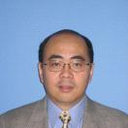Mutations in the RUNX2 gene in Chinese patients with cleidocranial dysplasia.
Atslēgvārdi
Abstrakts
Cleidocranial dysplasia (CCD) is an autosomal dominant inheritable skeletal disease caused by heterozygous mutations in an osteoblast-specific transcription factor, RUNX2. Mutational analyses of RUNX2 were done on 4 unrelated Chinese patients with CCD. One nonsense and 3 missense mutations were detected, including one novel mutation, a heterozygous G to C transition mutation at nucleotide 475 in exon 2, which converts glycine to arginine at codon 159 (G159R). Two mutations, R225W and R391X, were reported in Chinese patients with CCD for the first time. Our findings show that R225 mutations interfere with nuclear accumulation of RUNX2 protein, and that a lack of nuclear RUNX2 protein accumulation is at least one of the causes of haploinsufficiency in these cases. Body stature was significantly reduced in the 3 male and 1 female cases. The cases all had malformations of the tarsometatarsal joints. In 1 case, the humeroulnar joints and humeroradial joints were abnormal, and the elbow looked like a triangle. The data suggest that an impaired runt domain contributes to the short stature of CCD patients. We postulate that RUNX2 influences joint formation by affecting the differentiation pathways of chondrocytes and osteoblasts.


